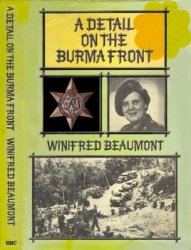Consider four images. First the fisherman. Hardy, weatherbeaten, intimately familiar with the winds and tides of his local shore, capable of turning his hand to many things, squeezing a hard living from the treacherous sea—a figure rendered familiar by the words “Ise the bye who builds the boat / And ise the bye that sails her / Ise the bye who catches the fish / And takes them home to Liza.” Next the fur-trader, represented by the strong-armed, free-spirited voyageur, his dress distinguished by bright sash and colourful toque, his life a mix of danger, hard work, and camaraderie; or by the “salty Orcadian,” penny-pinching and docile, neither particularly imaginative nor reluctant to accept his place in the hierarchical structure of the Hudson’s Bay Company. Thirdly, the lumberer, the settler who spends his winters “trivin away at all kinds of lumberin’’ to the detriment of his farm, according to some; the larger-than-life shantyman who ends months of isolation and dangerous work in the woods with an extended springtime bout of drunken carousing, according to others; one way or another he is a “character of spendthrift habits and villainous and vagabond principles” against whom more respectable settlers are advised to lock up their daughters. And finally the farmer, the sturdy yeoman whose life is “a pursuit of innocence and peace,” who derives “his pedigree from the patriarchs,” and is supported by nature’s tribute; the man who settles each evening at the fireside of his snug cottage, to admire the virtue, health, and happiness of his family and be “charmed by the profitable humming of the spinning wheel.”
These common perceptions of the men of early British North America create a colourful picture of the economic foundations on which settlement in the colonies rested. There were many other ways in which people made livings, of course. Small towns had their storekeepers, clergymen, shoemakers, carriage makers and so on; larger ones had their lawyers, merchants and businessmen. And none of this takes account of the vital work of women in town and countryside through this period. But fishing, fur-trading, lumbering and farming have become the standards upon which colonial economies are seen to have rested—in economists’ terms they were the “staple trades” of British North America—and those engaged in these activities stand as recognizable “Canadian” types. Like most stereotypes, however, such popular images combine a few grains of truth with large measures of invention. They are the stuff of legends and moralistic tales, caricatures rather than portraits. Their continuing currency, in literature and in drama, and in museums that celebrate and Replicate “more leisurely” colonial times, demands fuller consideration of the roles that these activities played in the lives of our predecessors.




 World History
World History









